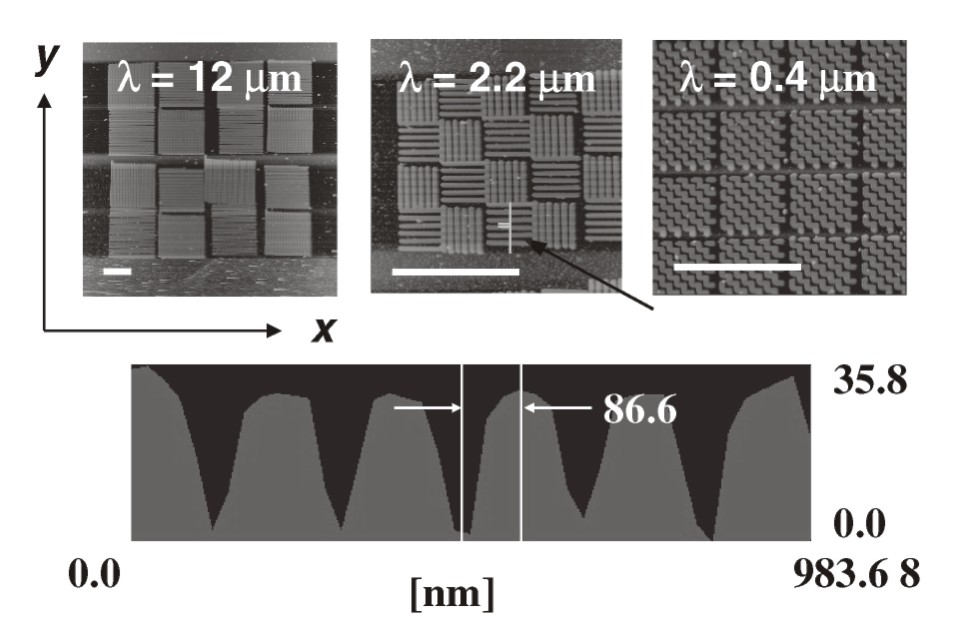- Pioneered in the study of substrate-induced phenomena in nematic liquid crystals, with predictions verified by subsequent experiments.
Alignment of liquid crystal’s orientational order, through its interaction with the substrate, is a critical element in liquid crystal (LC) displays. As an extension of the pioneering study on such interactions [1,2], the recent research focus on this topic is on the use of micro / nanotextured substrates for producing uniform alignment of nematic LC’s orientational ordering [3,4]. The basic principle underlying this approach is “frustration,” i.e., when the elastic energy required for the boundary LC layer to following the micro / nanotextured pattern exceeds a certain threshold, it becomes energetically favorable to sacrifice the interfacial interaction energy so as to minimize the elastic energy, by making a transition to a uniform alignment. What we have found is that by using such micro / nanotextured substrates, one can achieve large pretilt angles, e.g., on the order of 40 degrees (between the symmetry axis of the nematic LC and the substrate). This has been experimentally verified [4]. Large pretilt angles are useful for making bistable LC displays, with the advantage of energy savings.

Key publications:
- “Phase Transition in Surface-Aligned Nematic Films“, Ping Sheng, Phys. Rev. Lett. 37, 1059 (1976).
- “Boundary-Layer Phase Transition in Nematic Liquid Crystals“, Ping Sheng, Phys. Rev. A 26, 1610 (1982).
- “Liquid-Crystal Phase Transitions Induced by Microtextured Substrates“, T. Z. Qian and Ping Sheng, Phys. Rev. Lett. 77, 4564 (1996).
- “Liquid Crystal Orientation Transition on Microtextured Substrates“, Baoshe Zhang, Fuk Kay Lee, Ophelia K. C. Tsui and Ping Sheng, Phys. Rev. Lett. 91(21), 215501-4 (2003).
- Resolved the classical puzzle in the theory of nematic liquid crystals, with the formulation of an extended mean field theory.
Key publication:
- “Nematic-Isotropic Phase Transition: An Extended Mean Field Theory“, R. Tao, Ping Sheng and Z. F. Lin, Phys. Rev. Lett. 70, 1271 (1993).